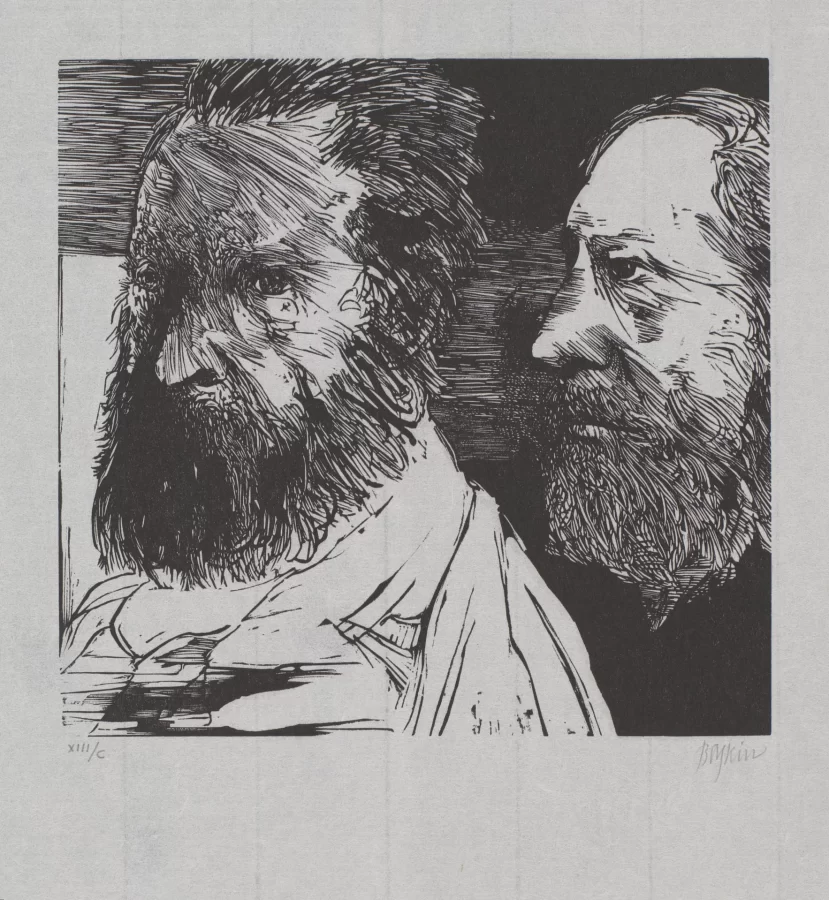Jean-François Millet (French, 1814 -1875)
Born into a peasant farming family, Millet featured agricultural work prominently in his paintings that would inspire the Impressionists to follow. A stipend enabled Millet to move to Paris, where he studied at the Ecole des Beaux-Arts with Paul Delaroche. After a few years, Millet returned to his home in Cherbourg to begin a career as a portrait painter. Back in Paris in the middle 1840s, he found fame and success, and worked around artists like Honore Daumier, Charles Jacque and Théodore Rousseau—artists who also championed realism over heroic and historical epic painting. Millet came to eschew the idealized pastoral images of the countryside that were standard within Académie des Beaux-Arts and its salons.
He became a founding member of the influential Barbizon school, emphasizing images of real, every-day life and working from nature. Millet’s scenes of the countryside and its workers inspired Salvador Dalí, Claude Monet, Georges Seurat, Mark Twain, and Vincent Van Gogh. Leonard Baskin seems to have taken his image of Millet and Rousseau from a relief sculpture by Henri Chapu (1833-1891) for a monument commemorating the principal founders of the Barbizon school, installed in Barbizon in the forest of Fontainebleau.


